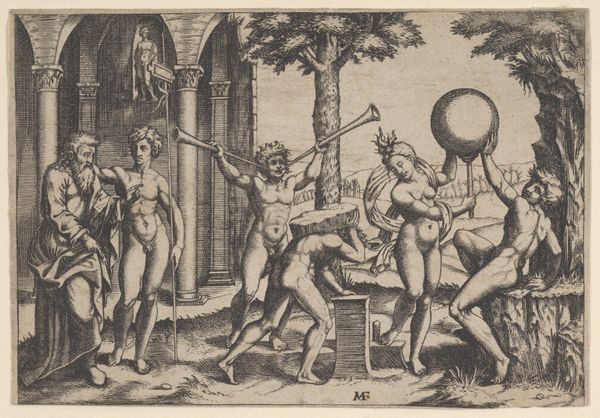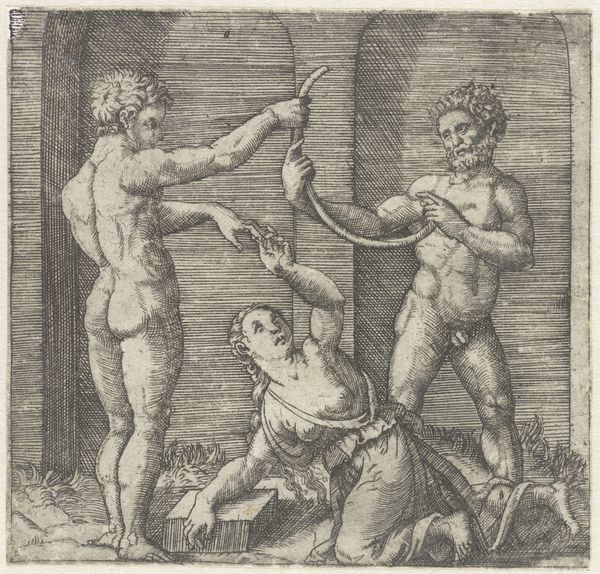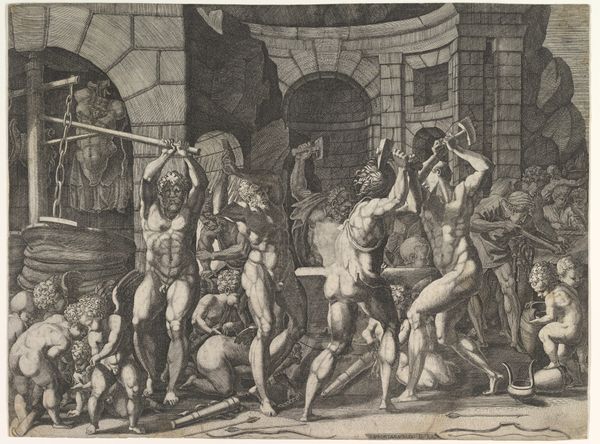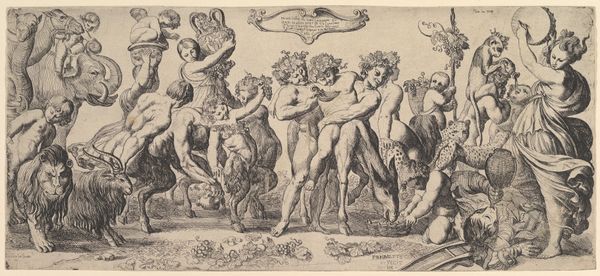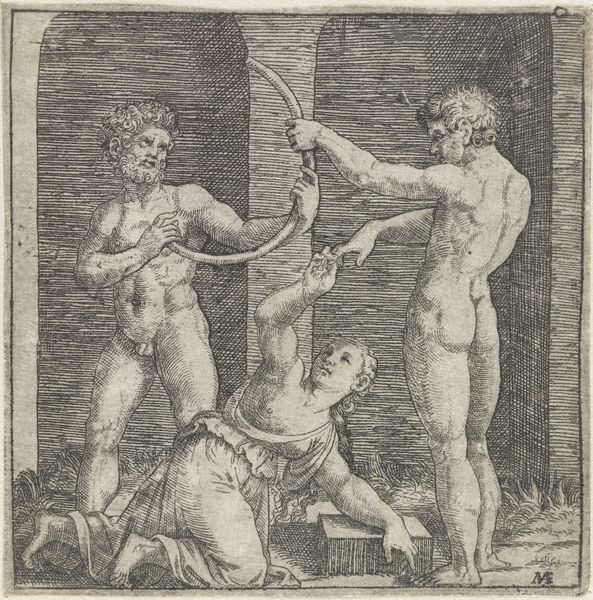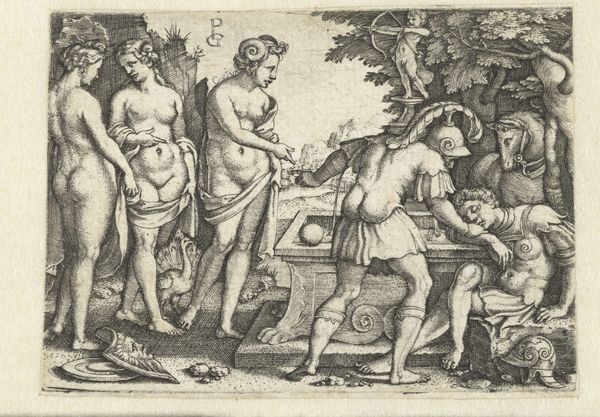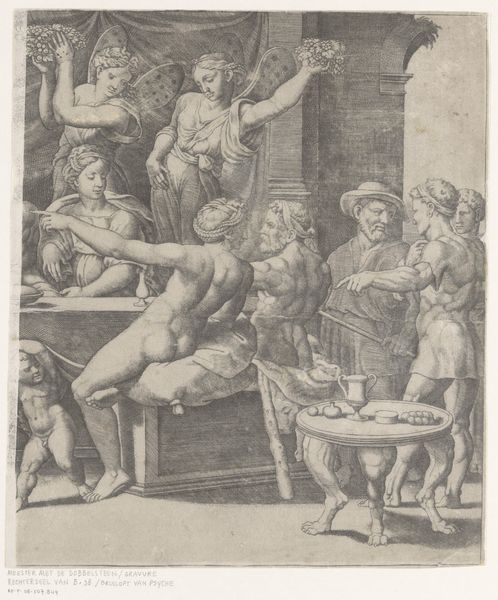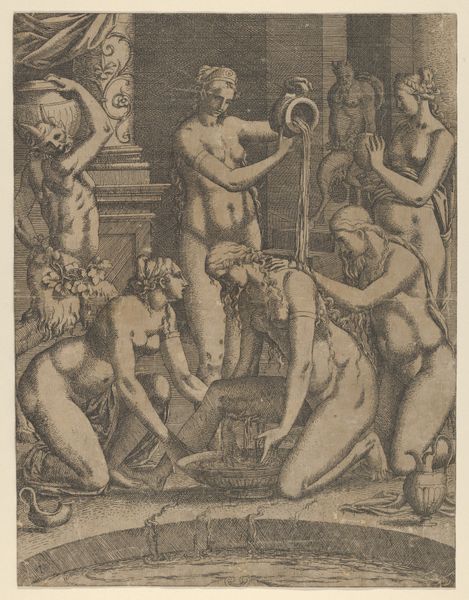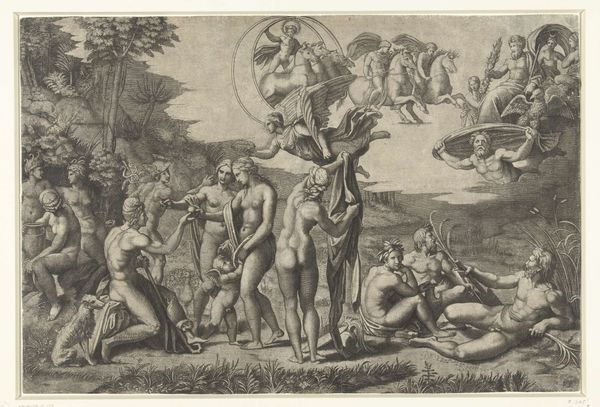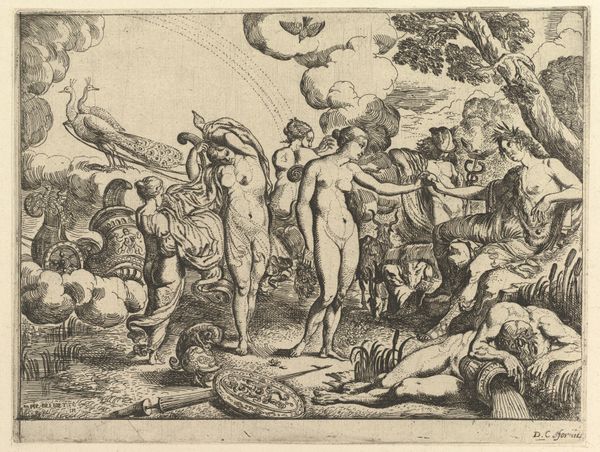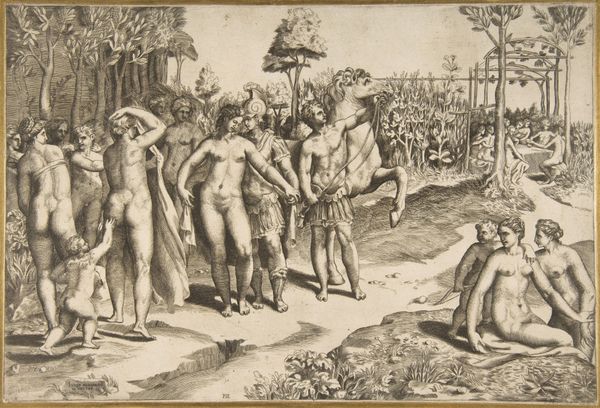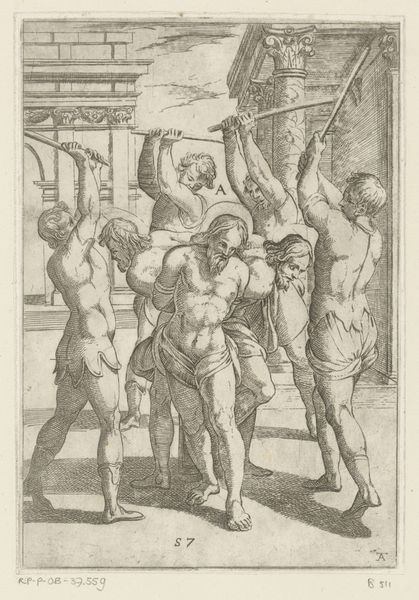
A man with two trumpets in the centre flanked by other figures including an old and a young man at right 1505 - 1515
0:00
0:00
drawing, print, engraving
#
drawing
#
allegory
# print
#
figuration
#
history-painting
#
italian-renaissance
#
nude
#
engraving
Dimensions: Sheet: 3 1/4 × 4 5/8 in. (8.3 × 11.8 cm)
Copyright: Public Domain
Curator: This engraving, currently held at the Metropolitan Museum of Art, is titled "A man with two trumpets in the centre flanked by other figures including an old and a young man at right." It was created by Marcantonio Raimondi sometime between 1505 and 1515. Editor: The immediate thing that strikes me is the stark contrast between the figures and the detailed background—it almost feels staged, like a performance. There's such intense labor being depicted. Curator: Precisely, and understanding that sense of performance requires looking at the possible historical underpinnings. While labelled generally as a history-painting, there's strong allegorical potential here, perhaps around concepts of labor, youth and legacy, or even the glorification of music and construction within courtly life. Editor: Considering its creation during the Italian Renaissance, it's intriguing to note Raimondi’s technical skill. The labour involved in producing this kind of finely detailed engraving is considerable. We see gradations of tone achieved solely through line work, which, while typical of the period, doesn't diminish its difficulty or materiality. How might the printing process speak to the wider socio-economic contexts? Curator: It opens a pathway for considering who had access to these images, what ideological positions they reproduce or subvert, and how these aesthetics play into constructions of masculinity and power during this historical moment. I’m particularly drawn to how classical aesthetics—such as ideal nude bodies—function within the context of manual labor. Is Raimondi attempting to elevate the dignity of labor through the classical form? Editor: And, crucially, what kind of labor? It looks like we see construction, maybe even mining based on the box being carried? That carries its own implications and invites questioning of working conditions and access to raw materials, or even trade and economy tied to production. Curator: I think situating the artwork within debates on cultural capital and accessibility brings a new dimension to understanding art of this period, offering entry points for discussion around its influence in later art. Editor: It is an exemplary artifact for probing the intricate nexus of skill, materiality, labor conditions, and broader societal impact. The capacity to produce these types of artworks, both then and now, is intrinsically woven into histories of making and markets.
Comments
No comments
Be the first to comment and join the conversation on the ultimate creative platform.
